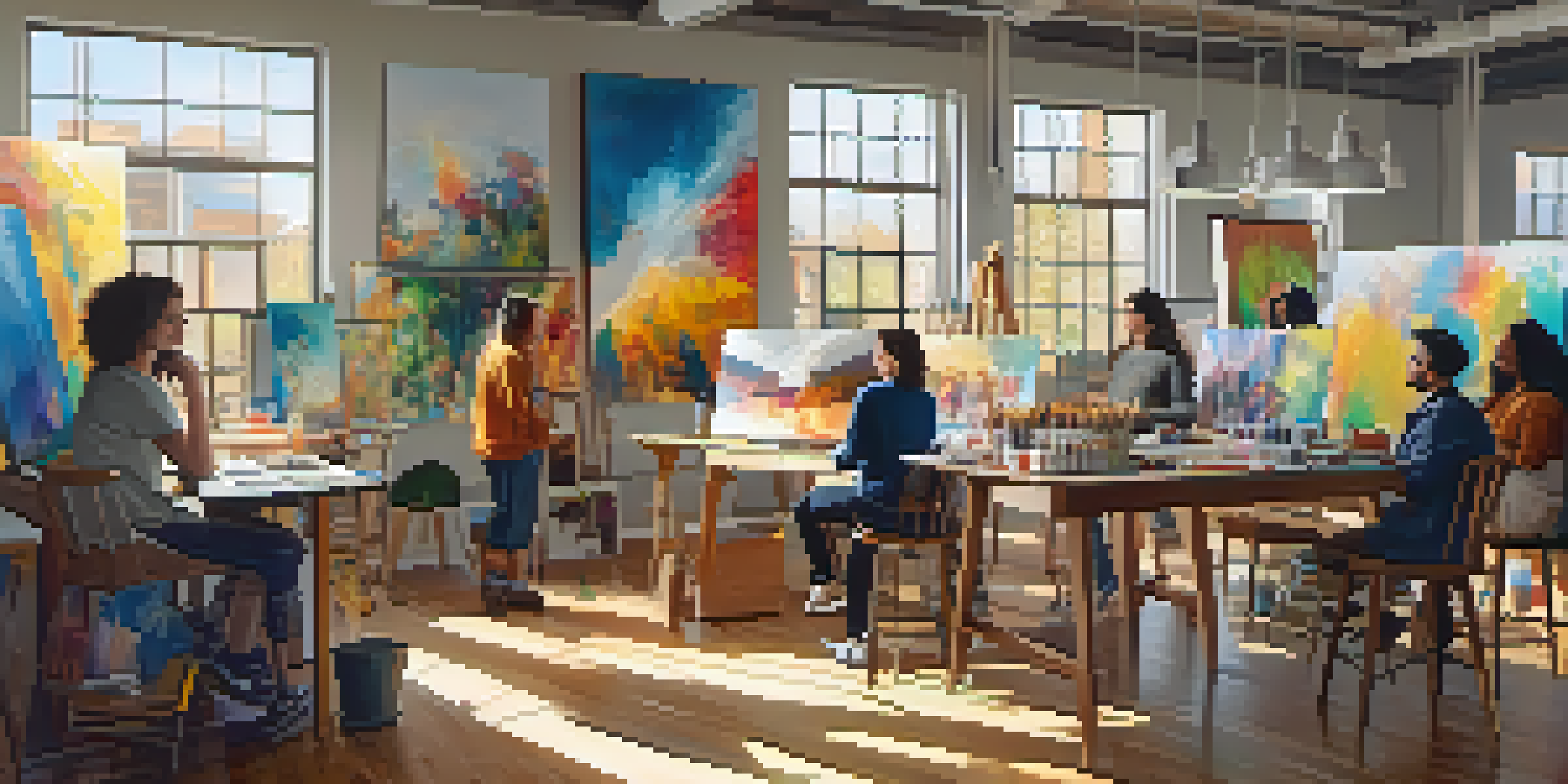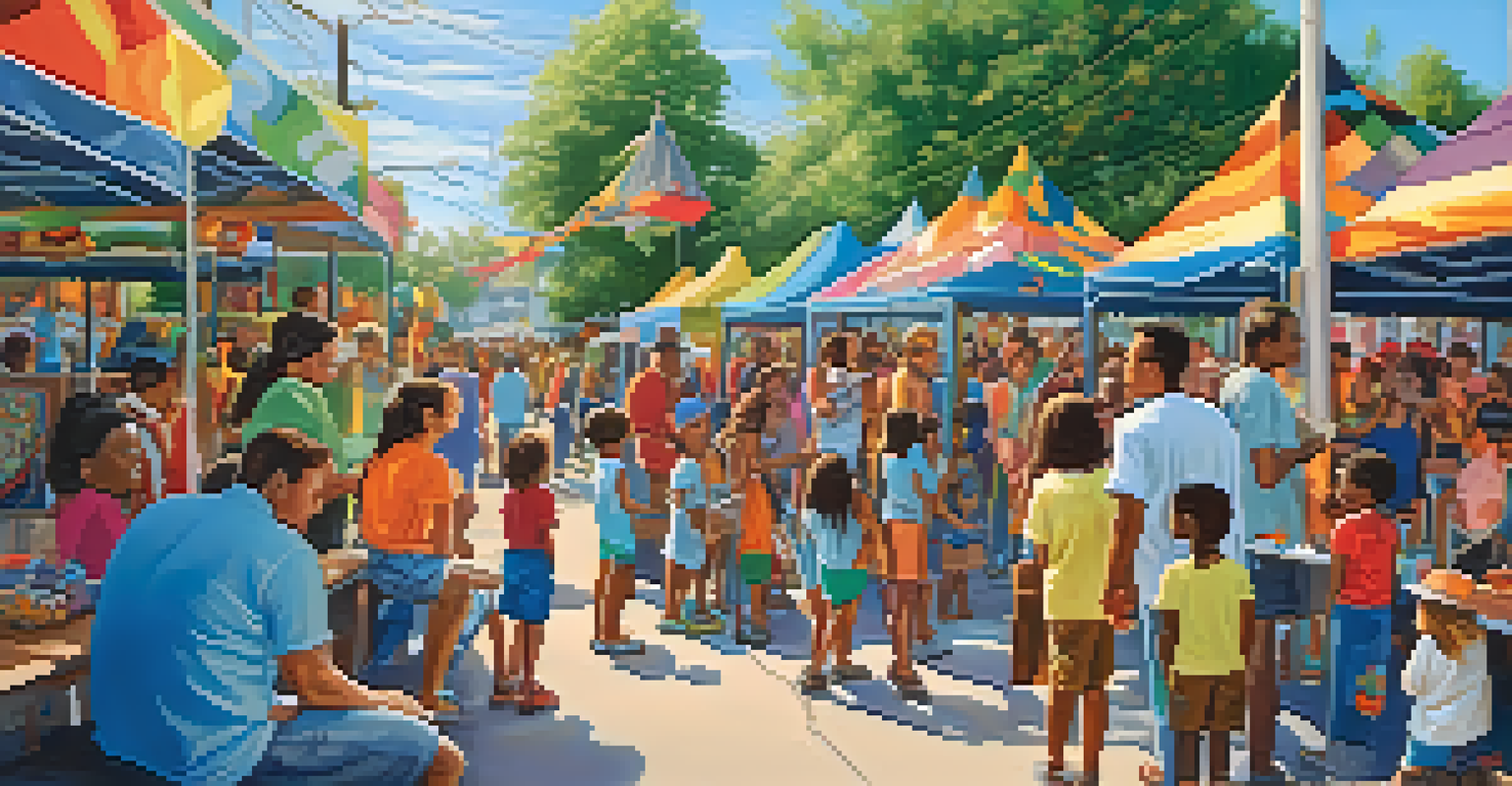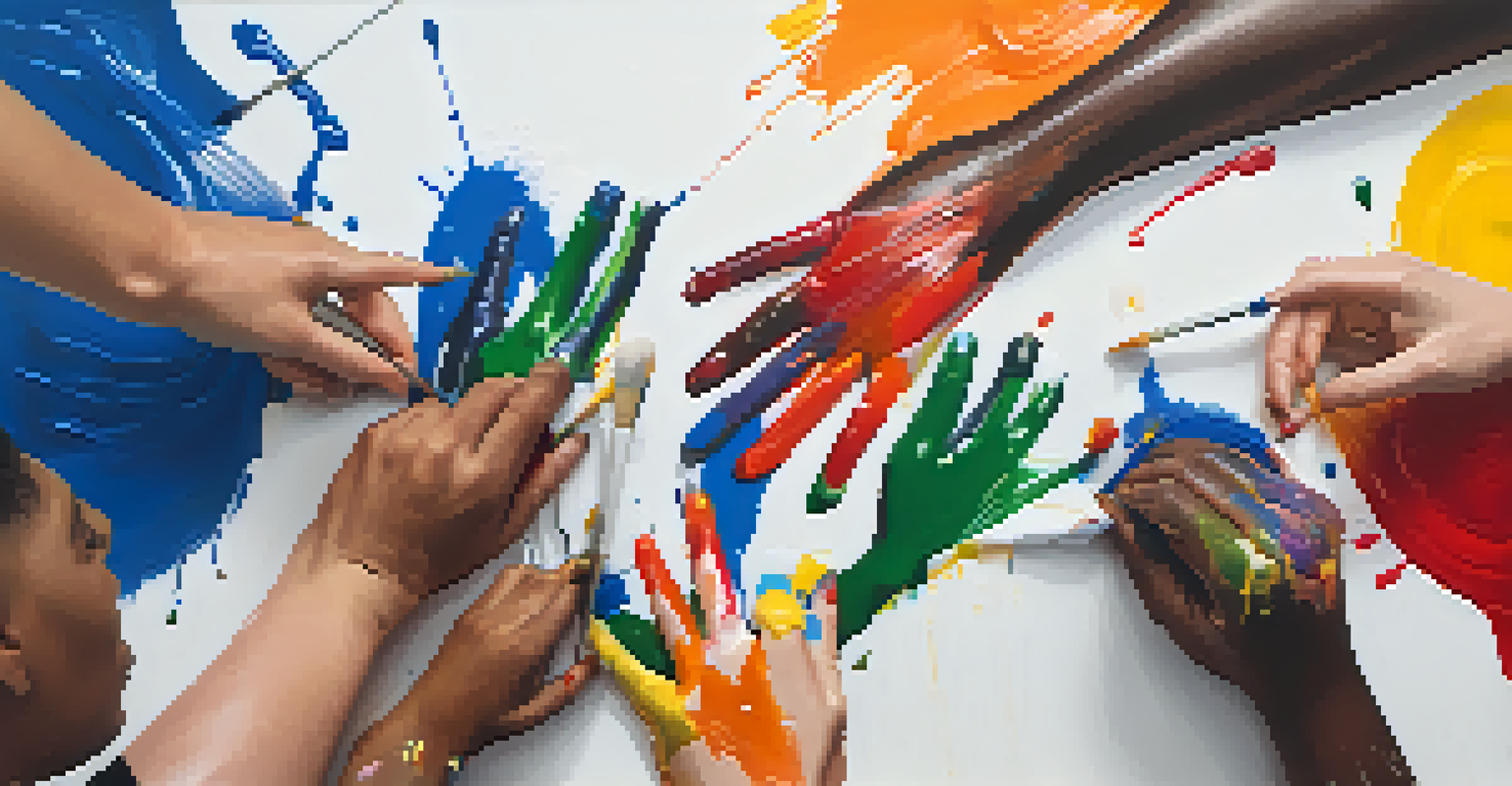Art and Representation: Ethical Considerations in Diversity

Understanding the Importance of Representation in Art
Representation in art is more than just aesthetics; it reflects the diverse tapestry of human experience. When artists depict various cultures, identities, and perspectives, they open the door to empathy and understanding. This representation can challenge stereotypes and promote inclusivity, making it essential in today's interconnected world.
Art is a way of expressing our humanity and our understanding of the world. It can break down barriers and create connections between people.
However, the absence of diverse voices in the art world can lead to a narrow viewpoint that fails to resonate with many audiences. For instance, a lack of representation can reinforce outdated narratives and perpetuate biases. As society evolves, so must the artistic expressions that reflect its complexities and multifaceted identities.
When artists embrace diversity in their work, they not only enrich their creations but also foster a sense of belonging for underrepresented groups. By showcasing a range of experiences, art can act as a bridge, connecting people from different backgrounds and encouraging dialogue. This emphasis on diversity is crucial in creating a more equitable and vibrant artistic landscape.
Ethical Considerations in Artistic Representation
Artistic representation carries significant ethical responsibilities. Artists must consider whose stories they are telling and whether they are doing so authentically. Misrepresentation can lead to harmful stereotypes and cultural appropriation, where elements of one culture are used without respect or understanding of their significance.

For example, when a non-Indigenous artist portrays Native American culture without consulting or involving Indigenous voices, it can perpetuate misconceptions and disempower those very communities. Thus, ethical representation demands a thoughtful approach, ensuring that the narratives shared are accurate and respectful.
Importance of Diverse Representation
Diverse representation in art fosters empathy and challenges stereotypes, enriching the artistic landscape.
Moreover, ethical considerations extend beyond just the subjects portrayed; they also encompass the impact of the artwork on audiences. Artists should reflect on how their work might influence perceptions and behaviors, striving to create pieces that promote awareness and understanding rather than division or harm.
The Role of Artists in Social Justice Movements
Artists have historically played a pivotal role in social justice movements, using their platforms to advocate for change. Through their work, they can illuminate issues of inequality, discrimination, and injustice, prompting audiences to reflect and take action. This makes art an invaluable tool for fostering social awareness and driving conversations around diversity and representation.
Diversity is not a reason for division; it is a reason for celebration. Art must reflect the voices of all communities.
By engaging with social justice themes, artists can challenge the status quo and inspire a sense of urgency around pressing issues. For instance, works that highlight racial inequality or gender discrimination can provoke necessary discussions and motivate audiences to support movements advocating for change. Art can serve as a catalyst for activism, encouraging people to engage with and address societal challenges.
However, artists must navigate their involvement carefully, ensuring their contributions are not performative but rooted in genuine advocacy. Authentic engagement with social issues, backed by research and collaboration with affected communities, can enhance the impact of their work and foster a more inclusive dialogue.
Cultural Appropriation vs. Cultural Appreciation
Cultural appropriation occurs when elements of one culture are adopted by another, often without understanding or respecting their significance. This practice can be harmful, especially when dominant cultures exploit marginalized ones for profit or aesthetic appeal. Recognizing the difference between cultural appropriation and appreciation is crucial for ethical representation in art.
Cultural appreciation, on the other hand, involves a respectful engagement with another culture, often characterized by collaboration and acknowledgment. For example, an artist who collaborates with members of a specific culture to create a piece that honors their traditions demonstrates appreciation rather than appropriation. This respectful dialogue fosters a deeper understanding and appreciation of diverse cultures.
Ethics in Artistic Representation
Artists bear the responsibility to portray cultures authentically, avoiding misrepresentation and cultural appropriation.
Navigating this delicate balance requires artists to approach their work with sensitivity and awareness. They should strive to educate themselves about the cultures they represent and actively involve those communities in their creative processes. By doing so, artists can create work that celebrates diversity without perpetuating harm.
The Influence of Audience Perception on Artistic Choices
Audience perception plays a significant role in shaping artistic choices and the direction of representation in art. Artists often consider how their work will be received, which can influence their decisions on themes, styles, and subjects. Understanding audience dynamics can help artists create pieces that resonate while remaining true to their vision.
However, catering too much to audience expectations can lead to diluted messages and missed opportunities for challenging societal norms. For example, an artist may shy away from addressing controversial topics for fear of backlash, potentially sacrificing a powerful message for broader appeal. Striking a balance between artistic integrity and audience engagement is essential.
Ultimately, artists should aim to create work that sparks conversation and encourages audiences to reflect critically on their perspectives. Engaging with diverse viewpoints can enrich the artistic process and lead to more meaningful representations that resonate across various demographics.
The Power of Collaboration in Diverse Artistic Endeavors
Collaboration is a powerful means of fostering diversity and inclusivity in art. When artists from different backgrounds come together, they can share unique perspectives and experiences, resulting in richer, more nuanced works. Collaborative projects can break down barriers and create a sense of community, enhancing the overall impact of the artwork.
For instance, community-based art initiatives often involve collaboration between artists and local residents, allowing for a more authentic representation of the community's experiences and stories. This engagement not only empowers individuals but also ensures that the art created resonates with those it represents, making it more impactful.
Collaboration Enhances Artistic Impact
Collaborative projects between artists and communities lead to more authentic and impactful representations in art.
Moreover, collaboration can challenge the traditional hierarchies in the art world, giving voice to underrepresented artists and communities. By pooling resources and talents, artists can create work that is not only diverse in representation but also in artistic expression, leading to innovative and thought-provoking outcomes.
Future Directions for Diversity in Artistic Representation
As we look to the future, the landscape of artistic representation is continuously evolving. The growing emphasis on diversity and inclusion in society is pushing artists to rethink their practices and embrace more inclusive narratives. This evolution presents exciting opportunities for innovation and creativity in art.
Emerging technologies, such as virtual reality and digital media, are also reshaping how diversity is represented and experienced. These platforms allow for immersive storytelling that can engage audiences in new ways, providing fresh perspectives on cultural narratives. Artists can leverage these technologies to expand the boundaries of representation and reach wider audiences.

Ultimately, the future of art lies in its ability to reflect the diverse realities of our world. By prioritizing ethical considerations and embracing collaboration, artists can create work that not only resonates with audiences but also contributes to a more just and inclusive society.